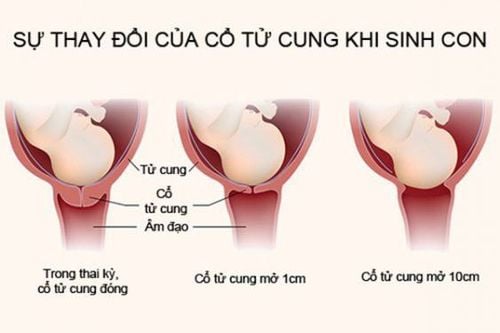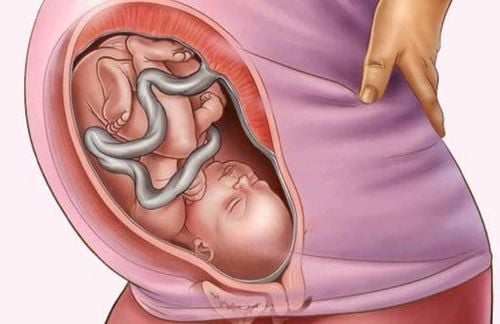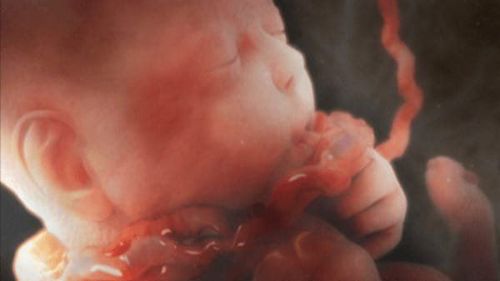This is an automatically translated article.
The article was professionally consulted by Specialist Doctor I Pham Thi Yen - Obstetrics and Gynecology Department - Vinmec Hai Phong International General HospitalThe fetal position is the part of the fetus that presents to the plane passing through the mother's pelvis through which the throne will enter and progress according to its mechanism and go out. Most babies will go into labor with their heads down when the baby's head is very well bent. However, a few other cases have abnormal fetal positions and need to be understood in order for the delivery to take place smoothly and safely for both mother and baby.
1. Thai butt
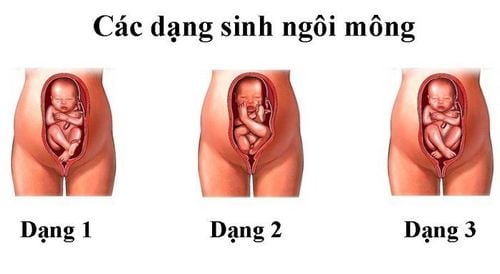
A fetus with a breech or breech position is a vertical position with the head on top, the buttocks or legs below. There are two types of breech position:
Full breech with the buttocks and two lower limbs flexed, the fetus is sitting cross-legged in the uterus. The butt is missing when there is only the buttocks or the legs or the knees when entering the throne. The breech position accounts for only 3% to 4% of all births, much less common than the cephalic position, but the most common abnormality compared to the face and forehead.
The cause of the breech position can be due to preterm labor when the fetus has not yet adjusted to the forward position, or there are factors that hinder the normalization process of the fetus such as underdeveloped mother's uterus, uterine fibroids, septum, placenta previa or birth defects such as oligohydramnios, hydrocephalus ...
Pregnant women have the ability to self-identify the breech position when seeing that the fetus often tends to kick in the lower region. Taste and sensation of one side of the lower abdomen due to compression of the fetal head. Palpation of the abdomen still shows that the uterus has an ovoid shape, along the longitudinal axis, but the most clear sound of the fetal heart is at the level of the belly button or above the navel.
During labor, vaginal examination when the cervix is dilated will not show a hard round area like the crown but will see the top of the sacrum, the area of the buttocks or the legs. However, ultrasound will be the commonly used means to determine the breech position, single or twin pregnancy as well as fetal size in order to select the appropriate delivery method.
2. Thai face
The face position is the head position with the baby's face up to the maximum, which can appear from the beginning or is a consequence of the head position when the baby does not bow well.
Face-to-face fetuses account for 0.2% of all positions during labor.
Causes of face shape include factors that cause the head to tilt or prevent it from bowing well. On the mother's side, the cause may be due to asymmetry between the fetal head and pelvis, tumors in the pelvis such as uterine fibroids... On the fetal side, the fetus has a large neck, goiter, and large breasts. , fetal craniofacial anomalies... accounted for most of the cases of face-to-face. In addition, face-to-face pregnancy is also caused by appendages such as the umbilical cord wrapped around the neck, low placenta, polyhydramnios...
Abdominal examination shows that the facial position is similar to the crown, only different when palpating the deep groove between the back and the head, That's the nasolabial fold, also known as the "shade of the ax" sign. During labor, if the amniotic fluid is still high, it will be difficult to touch your face. When the amniotic membrane has broken, the cervix is dilated, vaginal examination with palpable mouth, nose, cheekbones, and roof of the eyes will help determine the face.
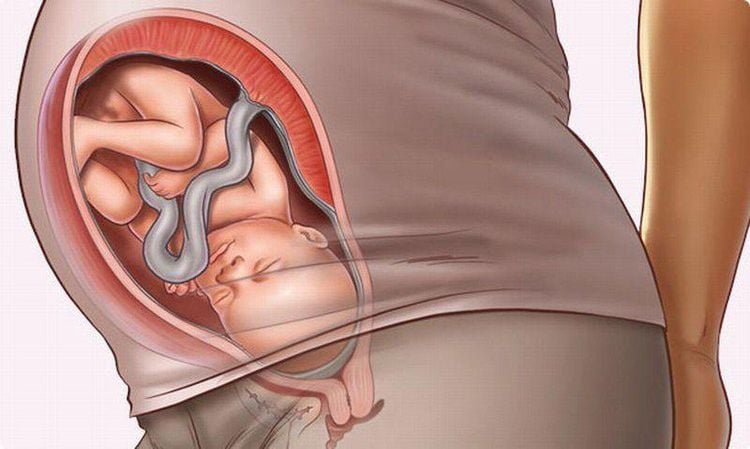
3. Crown of forehead
The forehead is an intermediate form between the crown and the face, which means that the head is both bowed and not maximally tilted. Therefore, the majority of frontal positions are detected only in advanced labor with a very rare rate, with 1/3000 to 1/1000 types.
The cause of the frontal position is similar to the cause of the face position when it includes all the reasons why fetal bowing is hindered. Among them, pelvic head disproportion is always the most common cause. Besides, the frontal position can also be the result of the doctor's surgery when performing a cesarean section. However, in up to 30% of cases, no cause can be found.
Abdominal examination when the forehead is in general is not different from the face with the navel not as deep as the face, but the chin will be palpated. However, the chin is not palpable on vaginal examination when the cervix is dilated while the nose and mouth can still be palpated like a face.
4. Horizontal throne
Transverse pregnancy is also called shoulder position when the longitudinal axis of the fetus intersects the longitudinal axis of the mother to form a right angle. It is called an oblique position if the longitudinal axis of the fetus intersects the longitudinal axis of the mother to create an acute angle. However, this is only a temporary form of position, the fetus will adjust to a vertical or horizontal position to enter actual labor.
The transverse position accounts for about 0.5% of all positions in labor.
The cause of the transverse position on the mother's side is that multiple births are in the first place when the rate of breech birth in the third child will increase ten times that of the first child. The flabby abdominal wall causes the uterus to protrude, causing a horizontal or tilted position for the fetus. In the case of twins, the transverse position may be due to a narrow pelvis, uterine malformation or tumor of the prostate that prevents the fetus from turning its head. On the fetal side, premature birth, the second fetus in twins or stillbirth are easy to move into the transverse position due to the inability to adjust. In addition, if the placenta closes the striker, polyhydramnios or short umbilical cord can also lead to a transverse position.
Contrary to the vertical position, the horizontal position is an abnormal fetal position that is easy to see when palpating the abdomen. The abdomen of the pregnant woman is not ovoid, but the raft is horizontal with the fundus of the uterus almost at the level of the navel. When palpating, you will not see the fetal pole located at the bottom of the uterus, but the fetal head on one side of the mother and the buttocks on the other side. In addition, manipulation above the scapula will also show nothing. At the same time, it is also necessary to determine where the fetal back is located. If the back is anterior, a solid flat surface will be palpable below the abdomen and vice versa, if the back is palpable, only the clumps of the limbs are palpable.
In vaginal examination, the most important sign is the absence of fetal head and buttocks. If the cervix is dilated and the fetal presentation is lower, the shoulder blades and clavicle can be palpated. In the case of long-term labor, the water has broken, a fetal shoulder can be tightly inserted into the pelvis and is often accompanied by prolapse of a hand or arm into the vagina or out of the mother's vulva.
5. The throne is complicated
Complex throne is to describe the descent of a limb along the throne and both move into the subarachnoid. The most common is the crest with prolapse of one hand or one forearm. Less commonly, one or two legs with head or one arm with buttocks. Not only that, complicated fetal position is often accompanied by prolapse of the umbilical cord, making the prognosis worse.
Causes of a complicated position include all the reasons why the throne does not occupy the entire upper waist such as multiple births, high head, narrow pelvis, small fetus,...
In short, abnormal fetal position is The presence of the fetus at the time of labor is not equal to the fetal head. Although the percentage is quite low, the abnormal position of the fetus always makes the delivery operation very complicated and difficult. Therefore, pregnant women need to have regular antenatal check-ups, especially in the days close to birth, to predict the position of the fetus and choose the safest delivery method. In the event that a normal delivery is not possible, the doctor will appoint a cesarean section to ensure the safety of both mother and baby.
The Obstetrics Department of Vinmec International General Hospital is one of the medical facilities chosen by many pregnant women for antenatal care and delivery, receiving high appreciation for its professional quality as well as professional care. .
Comprehensive mother and baby care : Comprehensive mother & baby health care, from before - during - after pregnancy fully; prenatal and postnatal screening for infants and mothers; heel test; maternity package ; pre-marital examination; prenatal care and counseling; cord blood storage. Children receive the best care from birth: right after the baby is born, the baby is skin-to-skin with the mother, the umbilical cord is cut by the father, and is monitored and cared for in the special care room for a few days. 12 hours for early detection of transient respiratory failure or other medical conditions. The baby is fully vaccinated. The birth team not only has obstetricians and midwives, but also has pediatricians on duty, monitoring to handle problems arising for the baby during the birth process. Modern and advanced techniques: Painless delivery by special anesthetic techniques. Treatment and care for extremely preterm infants < 27 weeks - Vinmec is the only hospital in the North that can save the lives of babies born 24 weeks premature. Outstanding equipment: The room is designed according to international hotel standards, with modern equipment such as: specialized transport incubators with ventilators, blood suction, pressure controlled oxygen tubes; deafness screening machine, brain cooling machine to treat asphyxia; CFM brain function monitor; Monitor 5 parameters; Resuscitation bed with built-in heating lamp. To register for an examination with experienced obstetricians at Vinmec, please book an appointment directly at the website for service.
Please dial HOTLINE for more information or register for an appointment HERE. Download MyVinmec app to make appointments faster and to manage your bookings easily.





